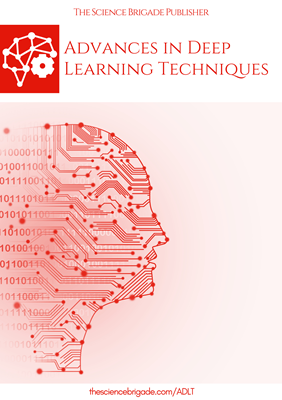Pushing Boundaries with Deep Generative Models: Innovations and Applications of VAEs and GANs
Keywords:
deep generative models, variational autoencoders, VAEs, generative adversarial networks, GANs, conditional generation, style transfer, multimodal synthesis, applications, innovationsAbstract
This paper delves into the cutting-edge realm of deep generative models, specifically focusing on variational autoencoders (VAEs) and generative adversarial networks (GANs). We explore the innovations and applications that have pushed the boundaries of these models, enabling them to generate realistic data across various domains. Beginning with an overview of VAEs and GANs, we delve into recent advancements such as conditional generation, style transfer, and multimodal synthesis. We discuss how these models have been utilized in diverse fields including image generation, text-to-image synthesis, and drug discovery. Furthermore, we examine challenges and future directions in the field, emphasizing the importance of ethical considerations and interpretability. Through this comprehensive analysis, we illustrate the immense potential of VAEs and GANs in driving innovation and fostering novel applications across disciplines.
Downloads
References
Goodfellow, Ian, et al. "Generative Adversarial Nets." Proceedings of the 27th International Conference on Neural Information Processing Systems (NIPS'14), 2014, pp. 2672-2680.
Kingma, Diederik P., and Max Welling. "Auto-Encoding Variational Bayes." Proceedings of the International Conference on Learning Representations (ICLR), 2014.
Radford, Alec, et al. "Unsupervised Representation Learning with Deep Convolutional Generative Adversarial Networks." Proceedings of the International Conference on Learning Representations (ICLR), 2016.
Larsen, Anders Boesen Lindbo, et al. "Autoencoding Beyond Pixels Using a Learned Similarity Metric." Proceedings of the 33rd International Conference on Machine Learning (ICML'16), 2016, pp. 1558-1566.
Denton, Emily L., Soumith Chintala, and Rob Fergus. "Deep Generative Image Models Using a Laplacian Pyramid of Adversarial Networks." Advances in Neural Information Processing Systems 28 (NIPS'15), 2015, pp. 1486-1494.
Salimans, Tim, et al. "Improved Techniques for Training GANs." Advances in Neural Information Processing Systems 29 (NIPS'16), 2016, pp. 2234-2242.
Kingma, Diederik P., and Jimmy Ba. "Adam: A Method for Stochastic Optimization." Proceedings of the 3rd International Conference on Learning Representations (ICLR), 2015.
Arjovsky, Martin, Soumith Chintala, and Léon Bottou. "Wasserstein GAN." Proceedings of the 34th International Conference on Machine Learning (ICML'17), 2017, pp. 214-223.
Higgins, Irina, et al. "beta-VAE: Learning Basic Visual Concepts with a Constrained Variational Framework." Proceedings of the 5th International Conference on Learning Representations (ICLR), 2017.
Dumoulin, Vincent, et al. "Adversarially Learned Inference." Proceedings of the 34th International Conference on Machine Learning (ICML'17), 2017, pp. 877-885.
Chen, Xi, et al. "InfoGAN: Interpretable Representation Learning by Information Maximizing Generative Adversarial Nets." Advances in Neural Information Processing Systems 29 (NIPS'16), 2016, pp. 2172-2180.
Liu, Ziwei, et al. "Progressive Growing of GANs for Improved Quality, Stability, and Variation." Proceedings of the 7th International Conference on Learning Representations (ICLR), 2018.
Bowman, Samuel R., et al. "Generating Sentences from a Continuous Space." Proceedings of the 20th SIGNLL Conference on Computational Natural Language Learning (CoNLL'16), 2016, pp. 10-21.
Karras, Tero, et al. "A Style-Based Generator Architecture for Generative Adversarial Networks." Proceedings of the IEEE Conference on Computer Vision and Pattern Recognition (CVPR), 2019, pp. 4401-4410.
Che, Tong, et al. "Mode Regularized Generative Adversarial Networks." Proceedings of the 35th International Conference on Machine Learning (ICML'18), 2018, pp. 878-887.
Zhu, Jun-Yan, et al. "Unpaired Image-to-Image Translation Using Cycle-Consistent Adversarial Networks." Proceedings of the IEEE International Conference on Computer Vision (ICCV), 2017, pp. 2242-2251.
Brock, Andrew, et al. "Large Scale GAN Training for High Fidelity Natural Image Synthesis." Proceedings of the 7th International Conference on Learning Representations (ICLR), 2018.
Makhzani, Alireza, et al. "Adversarial Autoencoders." Proceedings of the 33rd International Conference on Machine Learning (ICML'16), 2016, pp. 265-273.
Isola, Phillip, et al. "Image-to-Image Translation with Conditional Adversarial Networks." Proceedings of the IEEE Conference on Computer Vision and Pattern Recognition (CVPR), 2017, pp. 5967-5976.
Dai, Bo, and Nevin L. Zhang. "DiVA: Diverse Visual Feature Attribution." Proceedings of the 2021 Conference on Empirical Methods in Natural Language Processing (EMNLP), 2021, pp. 872-883.
Downloads
Published
Issue
Section
License

This work is licensed under a Creative Commons Attribution-NonCommercial-ShareAlike 4.0 International License.
License Terms
Ownership and Licensing:
Authors of this research paper submitted to the journal owned and operated by The Science Brigade Group retain the copyright of their work while granting the journal certain rights. Authors maintain ownership of the copyright and have granted the journal a right of first publication. Simultaneously, authors agreed to license their research papers under the Creative Commons Attribution-NonCommercial-ShareAlike 4.0 International (CC BY-NC-SA 4.0) License.
License Permissions:
Under the CC BY-NC-SA 4.0 License, others are permitted to share and adapt the work, as long as proper attribution is given to the authors and acknowledgement is made of the initial publication in the Journal. This license allows for the broad dissemination and utilization of research papers.
Additional Distribution Arrangements:
Authors are free to enter into separate contractual arrangements for the non-exclusive distribution of the journal's published version of the work. This may include posting the work to institutional repositories, publishing it in journals or books, or other forms of dissemination. In such cases, authors are requested to acknowledge the initial publication of the work in this Journal.
Online Posting:
Authors are encouraged to share their work online, including in institutional repositories, disciplinary repositories, or on their personal websites. This permission applies both prior to and during the submission process to the Journal. Online sharing enhances the visibility and accessibility of the research papers.
Responsibility and Liability:
Authors are responsible for ensuring that their research papers do not infringe upon the copyright, privacy, or other rights of any third party. The Science Brigade Publishers disclaim any liability or responsibility for any copyright infringement or violation of third-party rights in the research papers.



